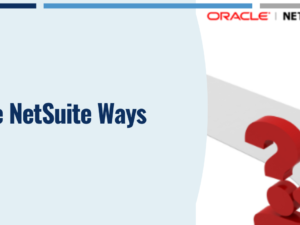
NetSuite continues to enhance ARM
NetSuite continues to make enhancements to its Advanced Revenue Management module (ARM) to support their customers’ compliance with ASC 606. “You need to jump into ASC 606 ASAP. You’re not going to get another deferral,” said Prasadh Cadambi, a partner at KPMG and a member of the Financial Audits and Standards Boards when the ASC 606 rules were written. Previous decisions to delay the implementation to 2018 for public companies and 2019 for private companies are unlikely to happen again.
Source: Barney Beal, NetSuite
About Advanced Revenue Management
Advanced Revenue Management automates revenue forecasting, allocation, recognition, reclassification, and auditing through a rule-based event handling framework. It is compliant with the ASC 606 revenue standard.
With Advanced Revenue Management, you can defer revenue for recognition across future periods according to the rules you configure. It supports fair values based on vendor-specific objective evidence (VSOE), best estimate of selling price (ESP), third party evidence (TPE), and other fair value methods your company uses. These fair values are used to determine the revenue allocation ratios for multi-element transactions.
The following records and transactions are used in Advanced Revenue Management:
- Revenue arrangements – Transactions that record the details of customer performance obligations for purposes of revenue allocation and recognition. Advanced Revenue Management automatically creates revenue arrangements from predefined revenue sources, such as approved sales transactions. The arrangements from multiple revenue sources can be consolidated.
- Revenue elements – Records that correspond to individual lines in a source. Revenue elements are attached as lines on a revenue arrangement.
- Revenue recognition rules – Records that define patterns for revenue recognition. They include, for example, the recognition method, amount source, and start and end date sources.
- Revenue recognition plans – Records that indicate the posting periods in which revenue should be recognized and the amount to be recognized in each period. Revenue plans are derived from revenue recognition rules. Each revenue element has a forecast plan and one or more actual plans. The actual revenue plans control the posting of revenue.
- Fair value price list – List of the records that define the fair value for items. Fair value price is used to allocate revenue in revenue arrangements.
NetSuite users – Click Here for more information
Or Contact Keystone today!

Call – 866-546-7227 | Email – info@keystonebusinessservices.net



